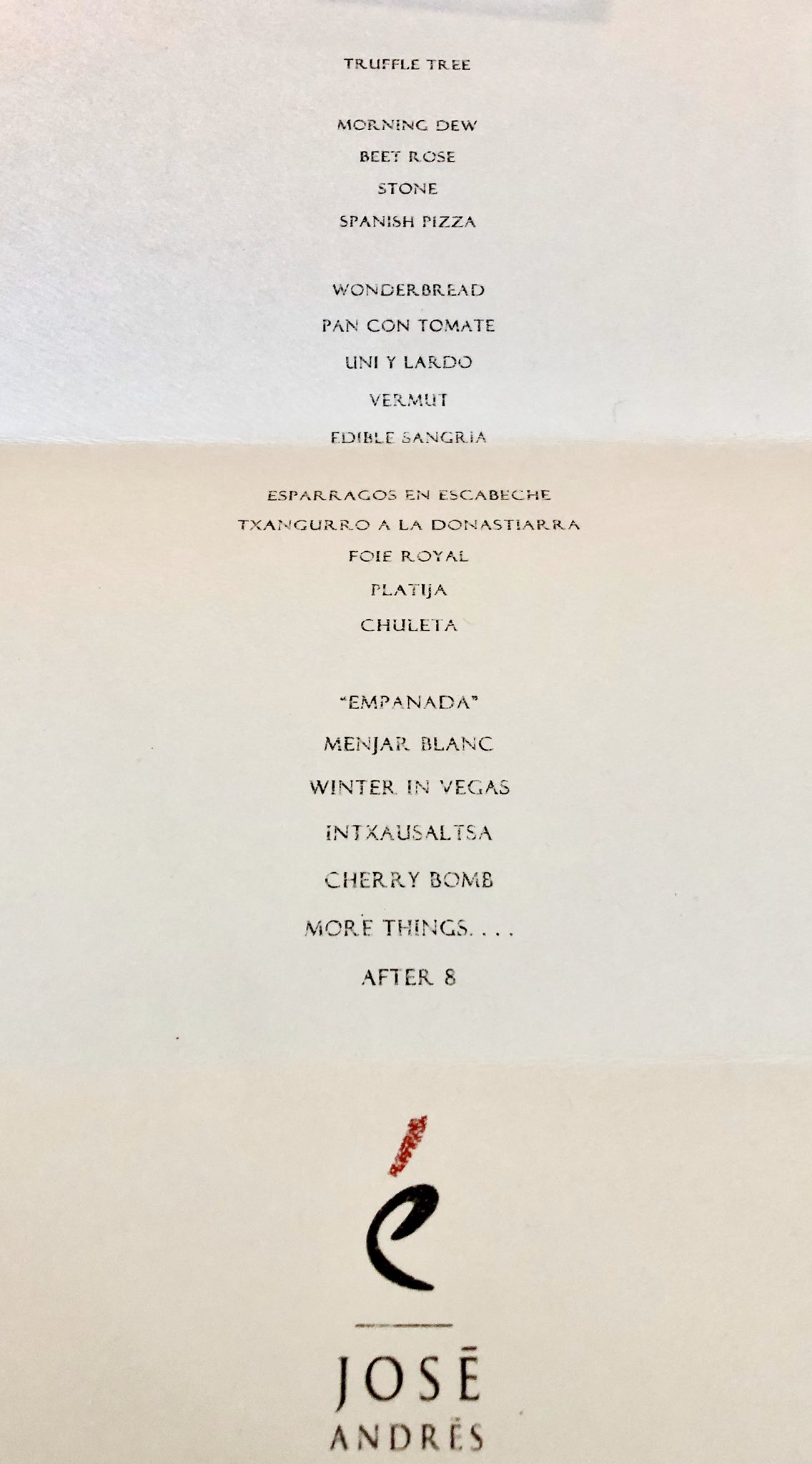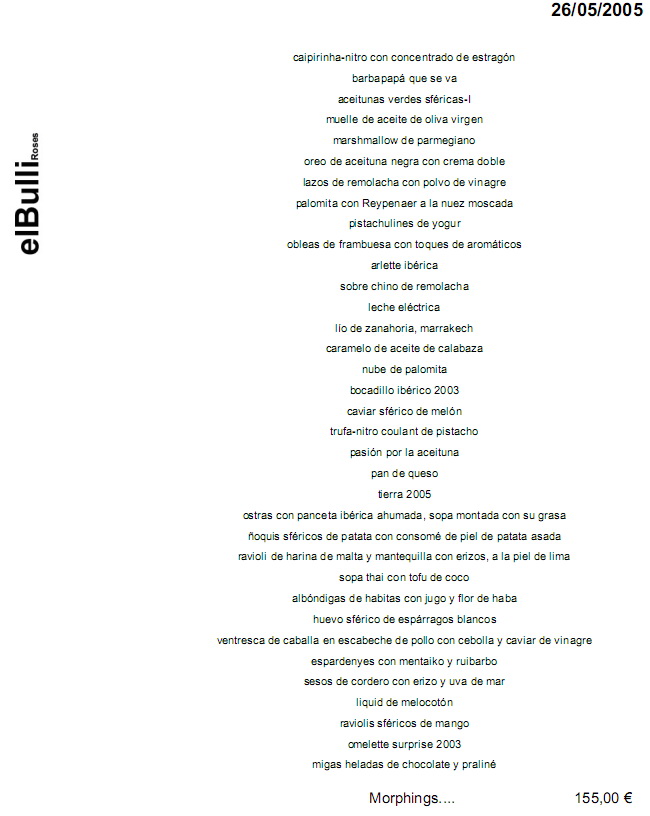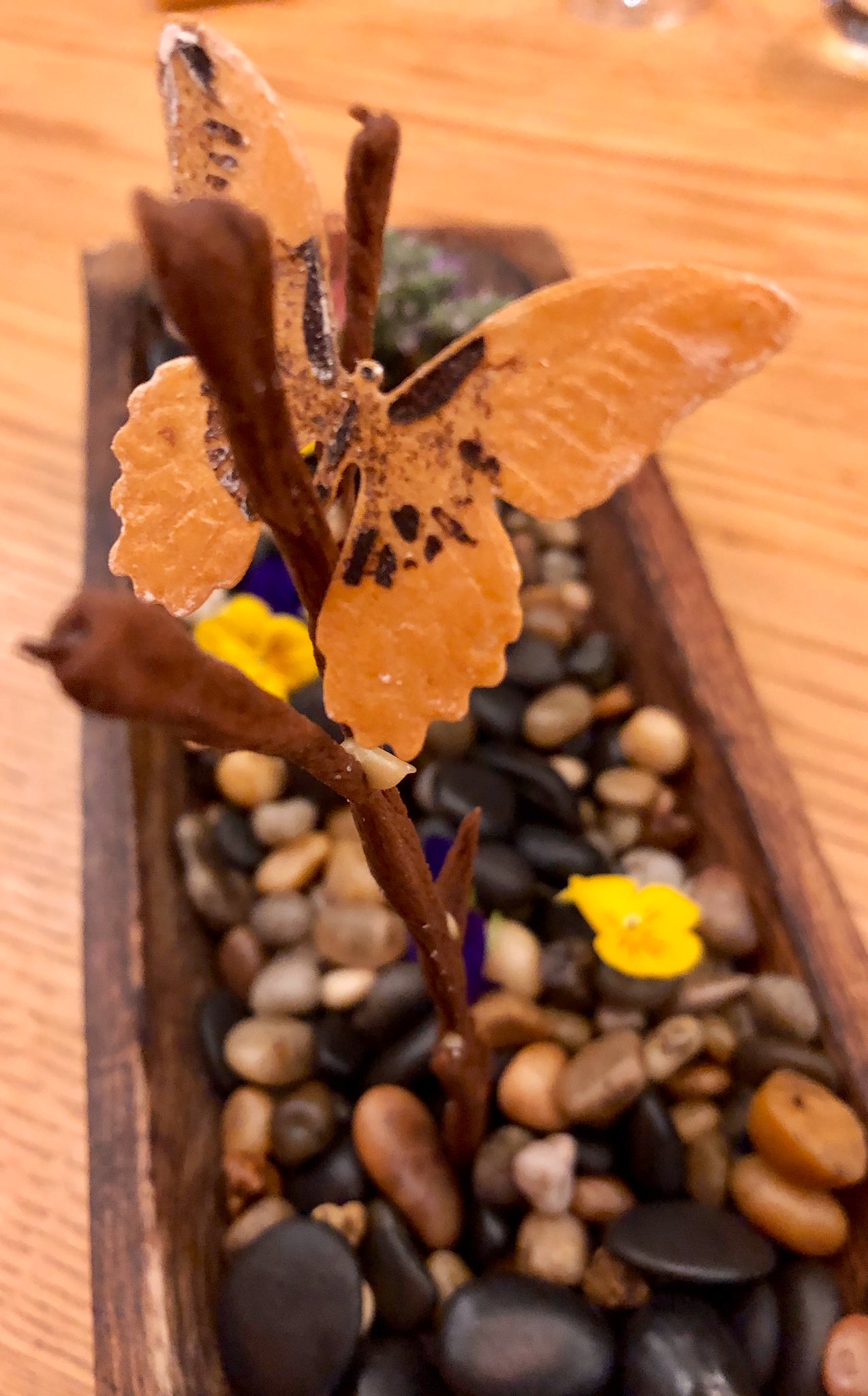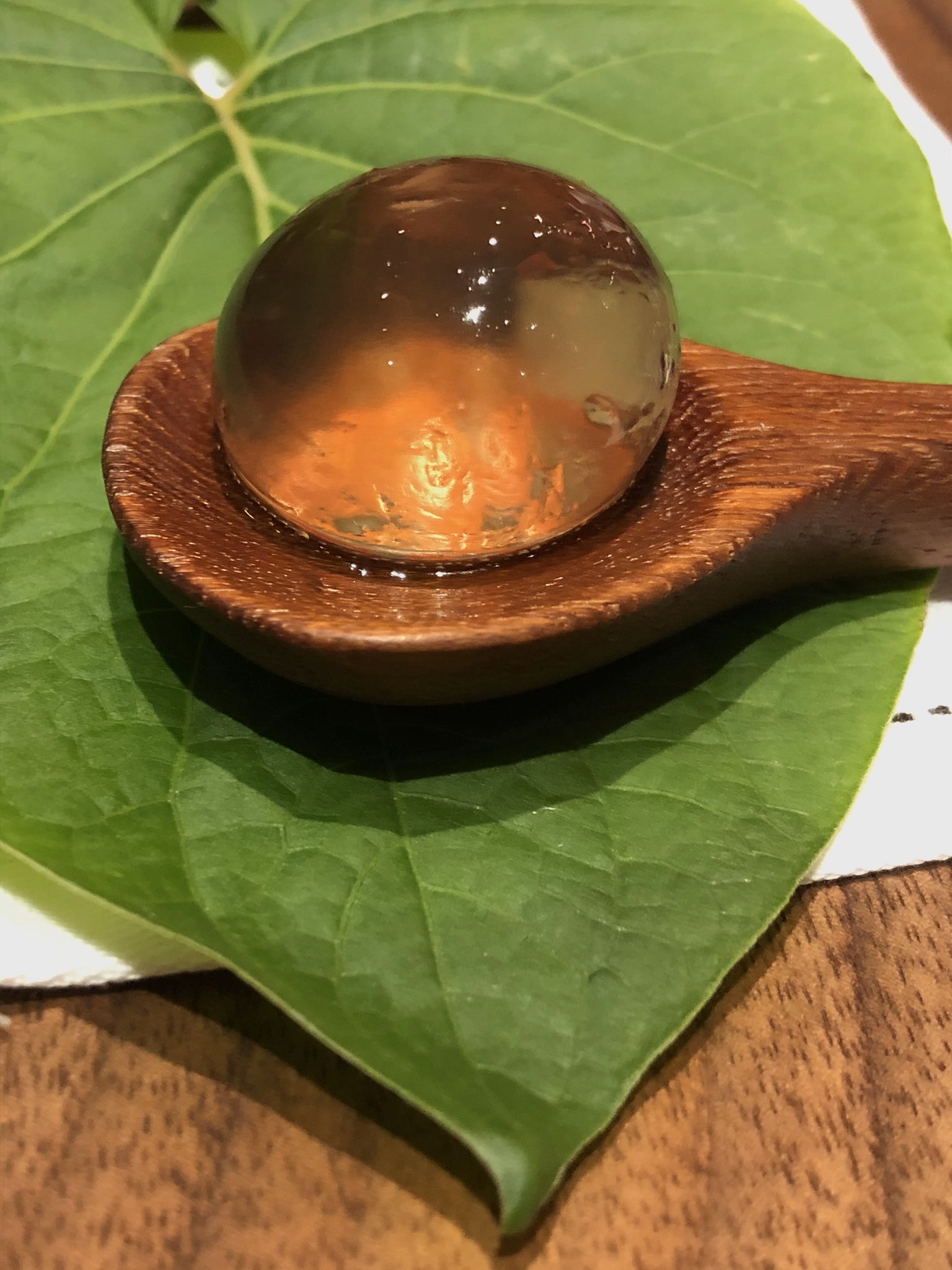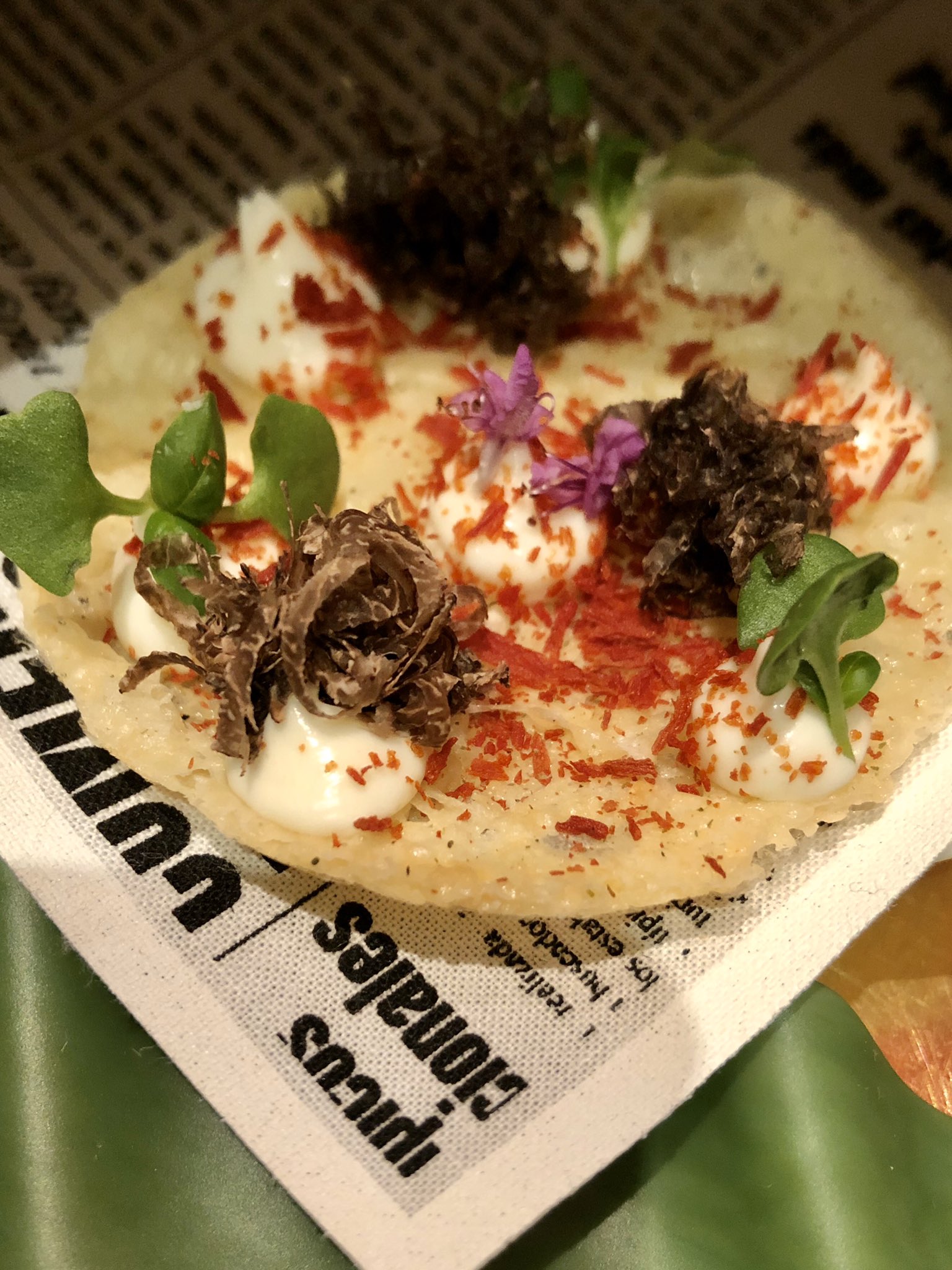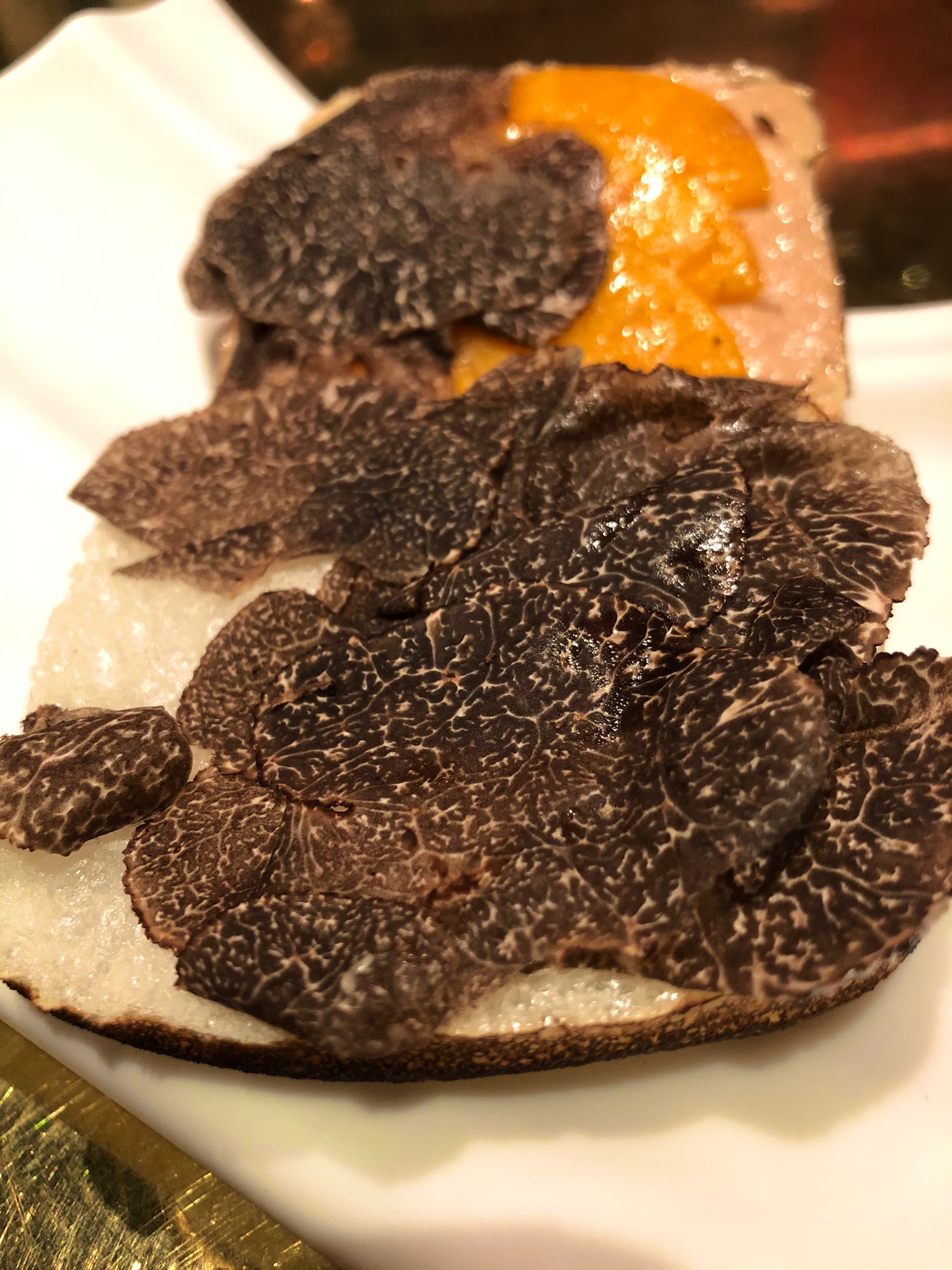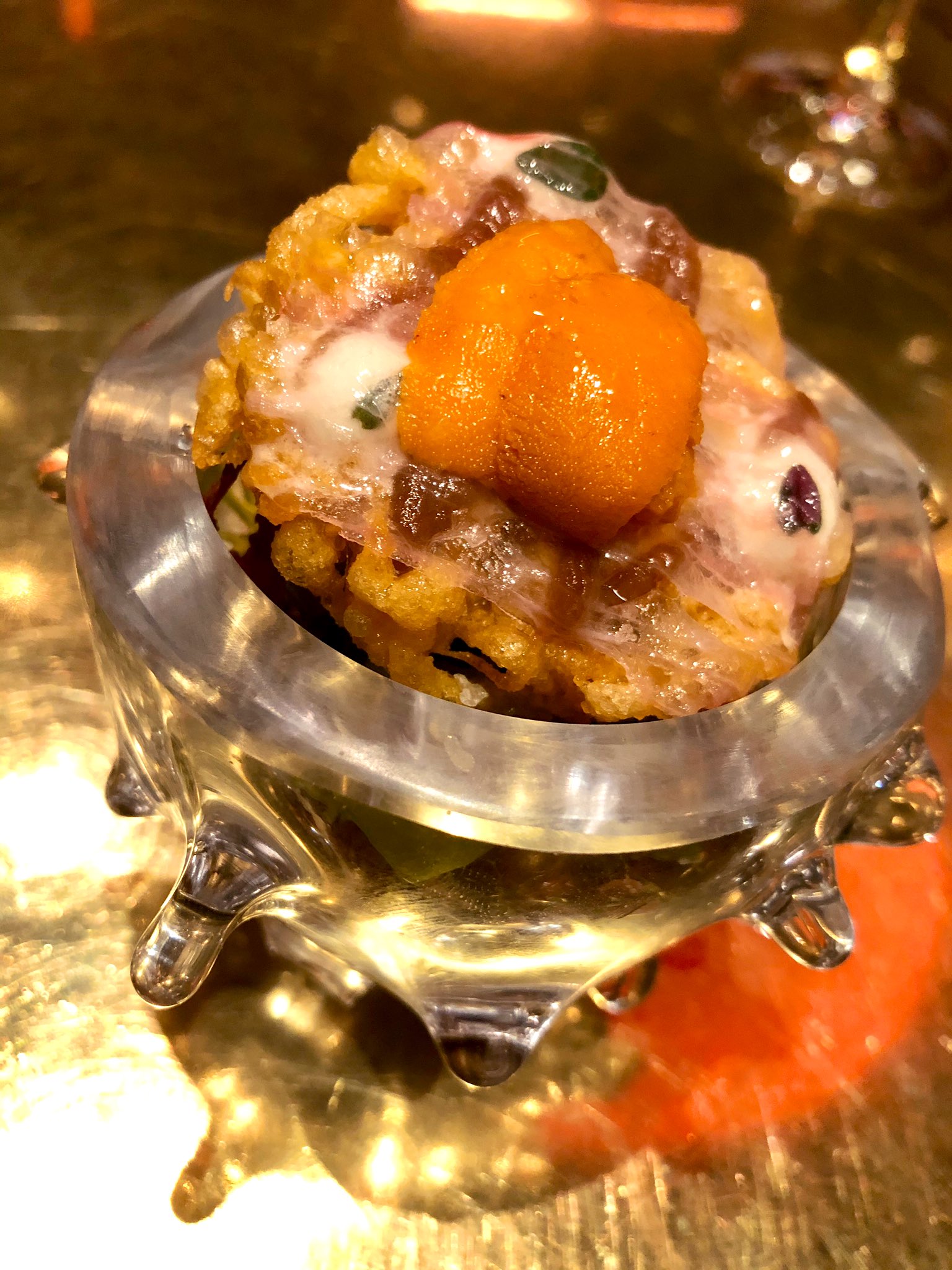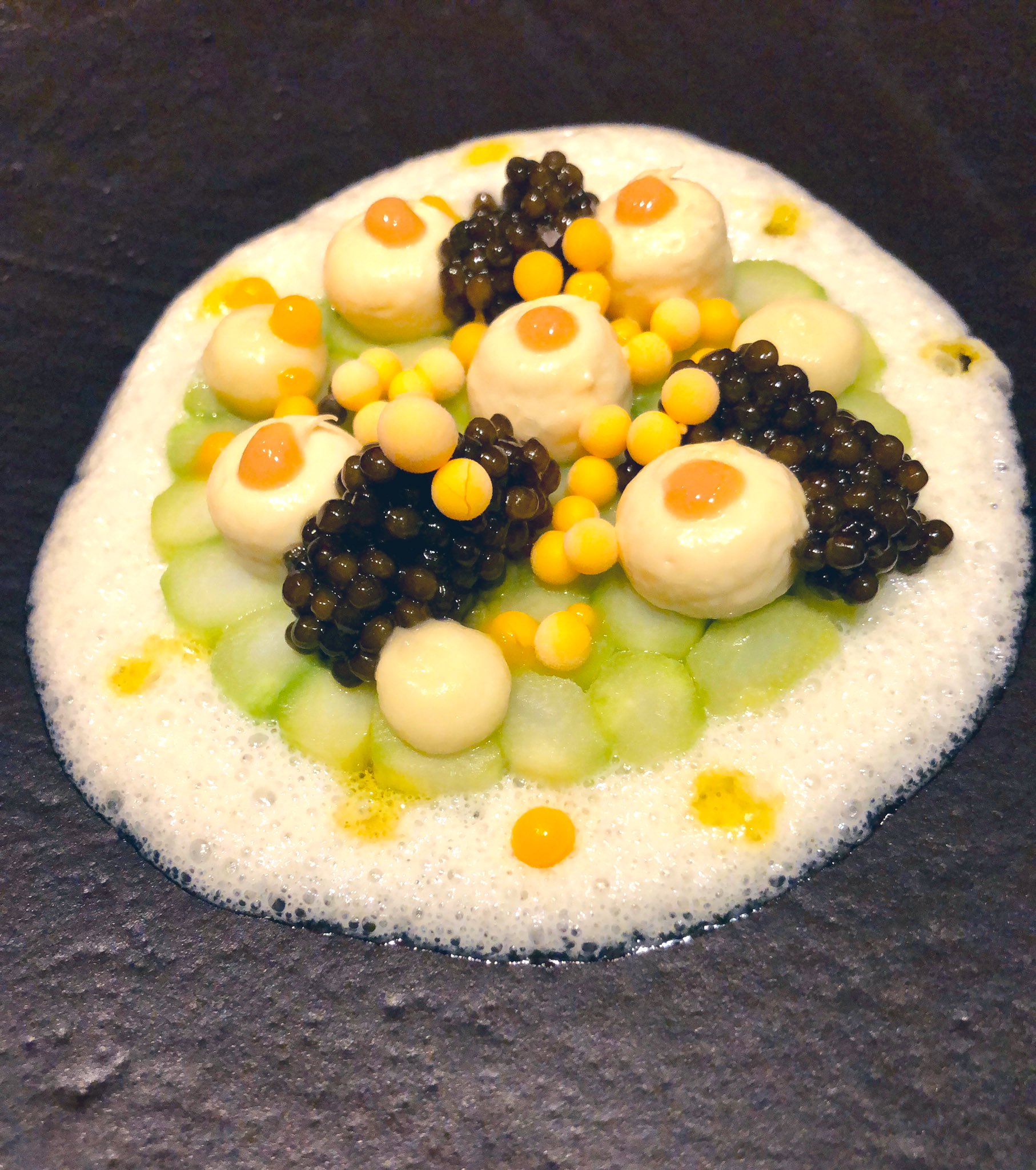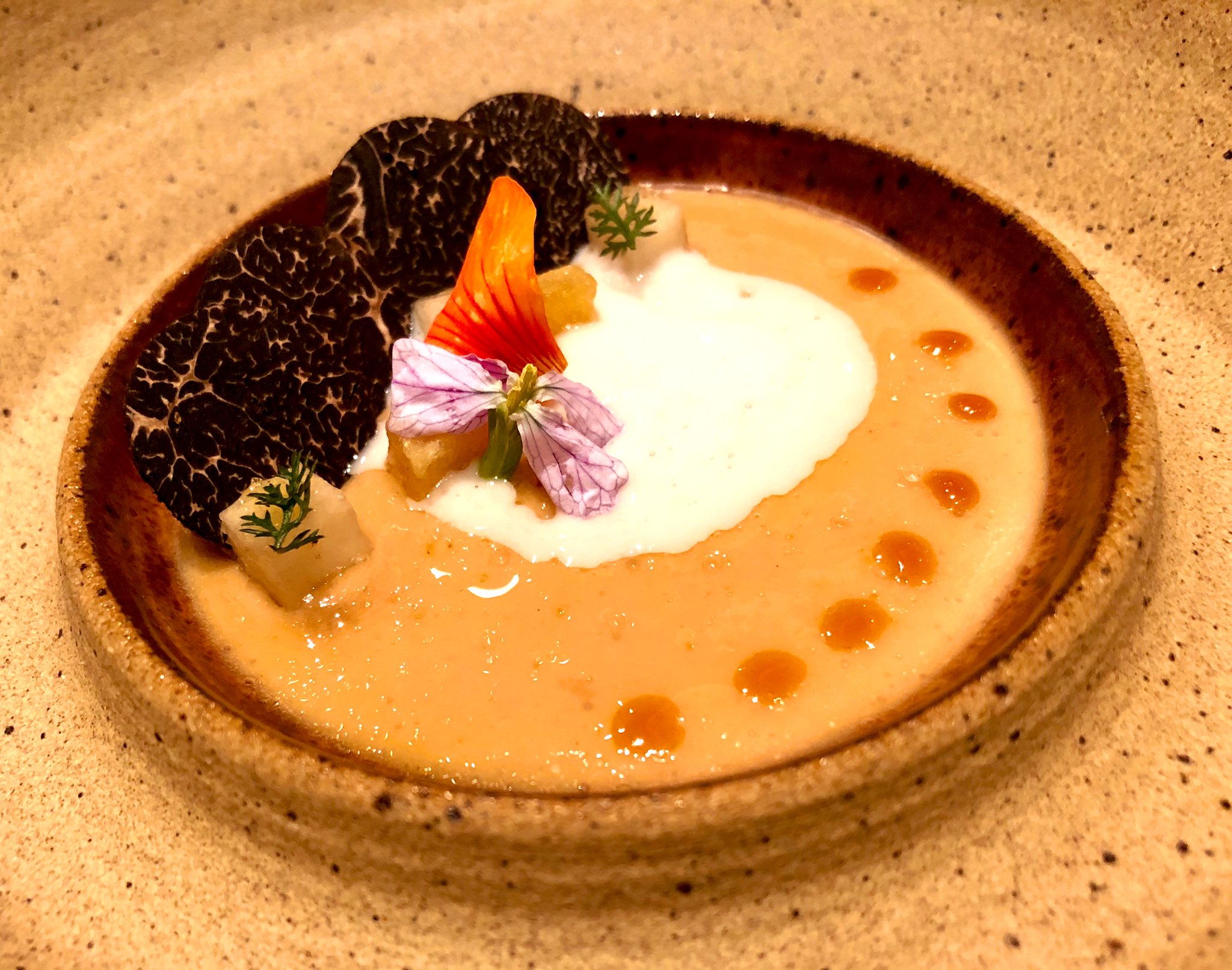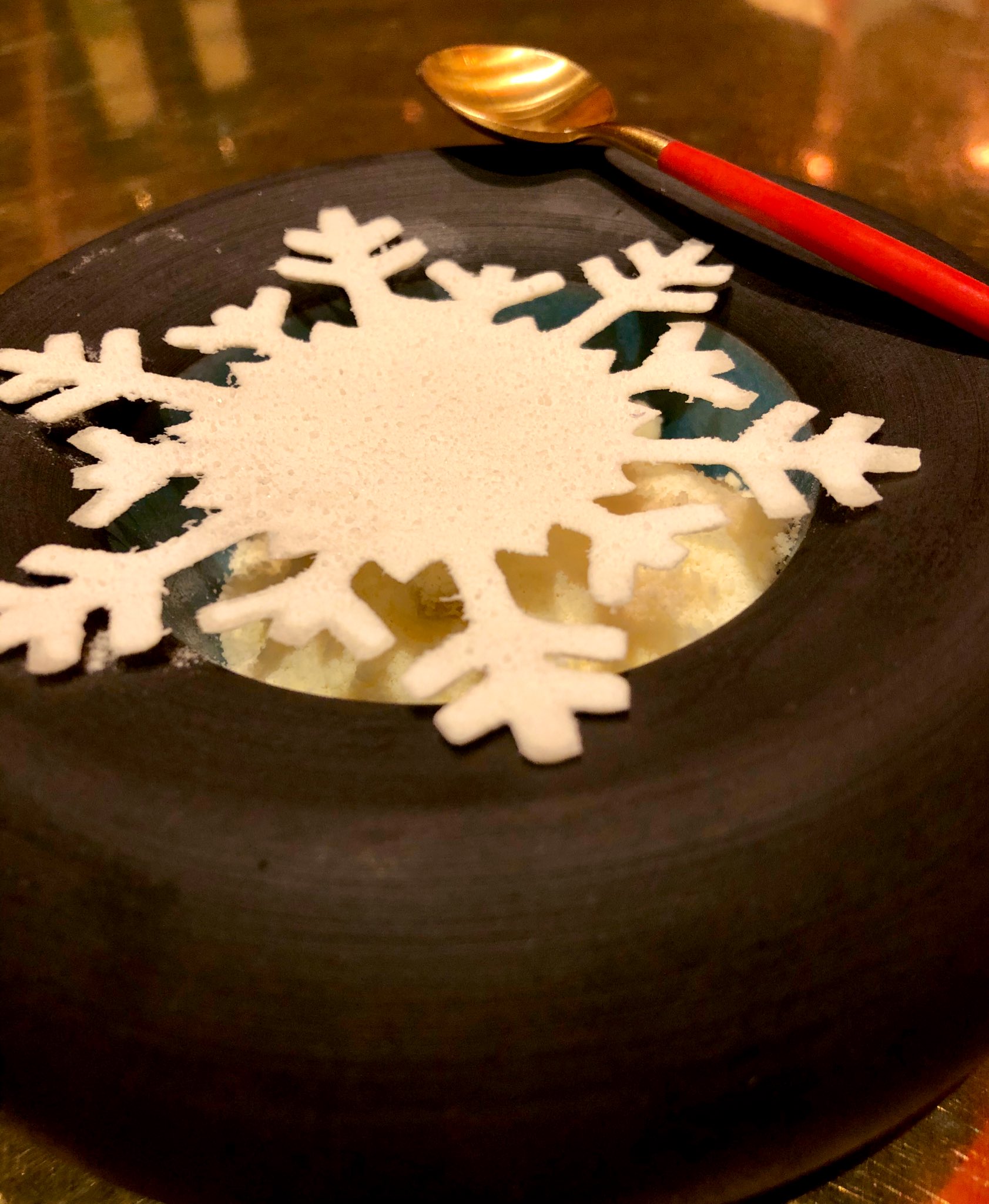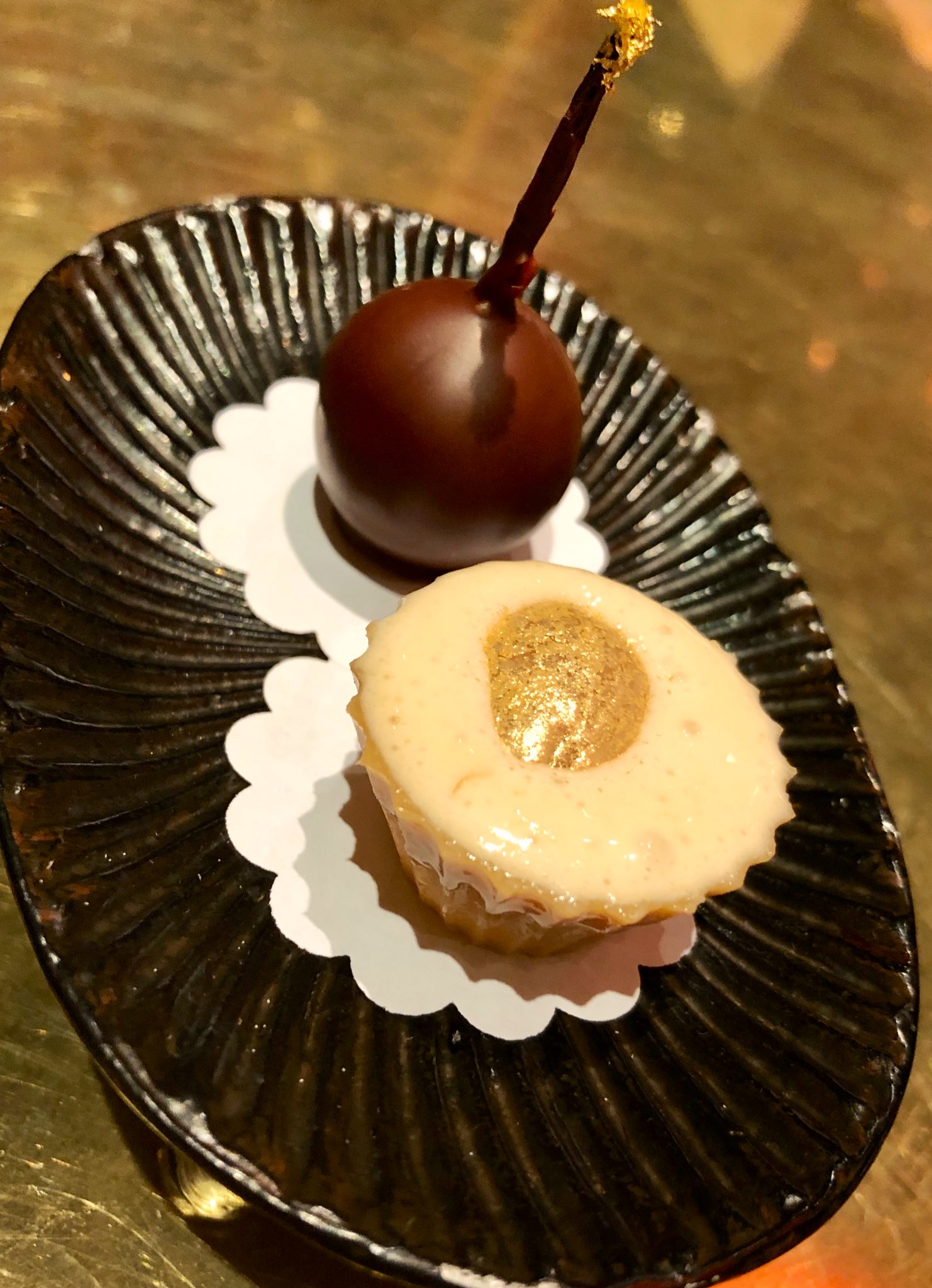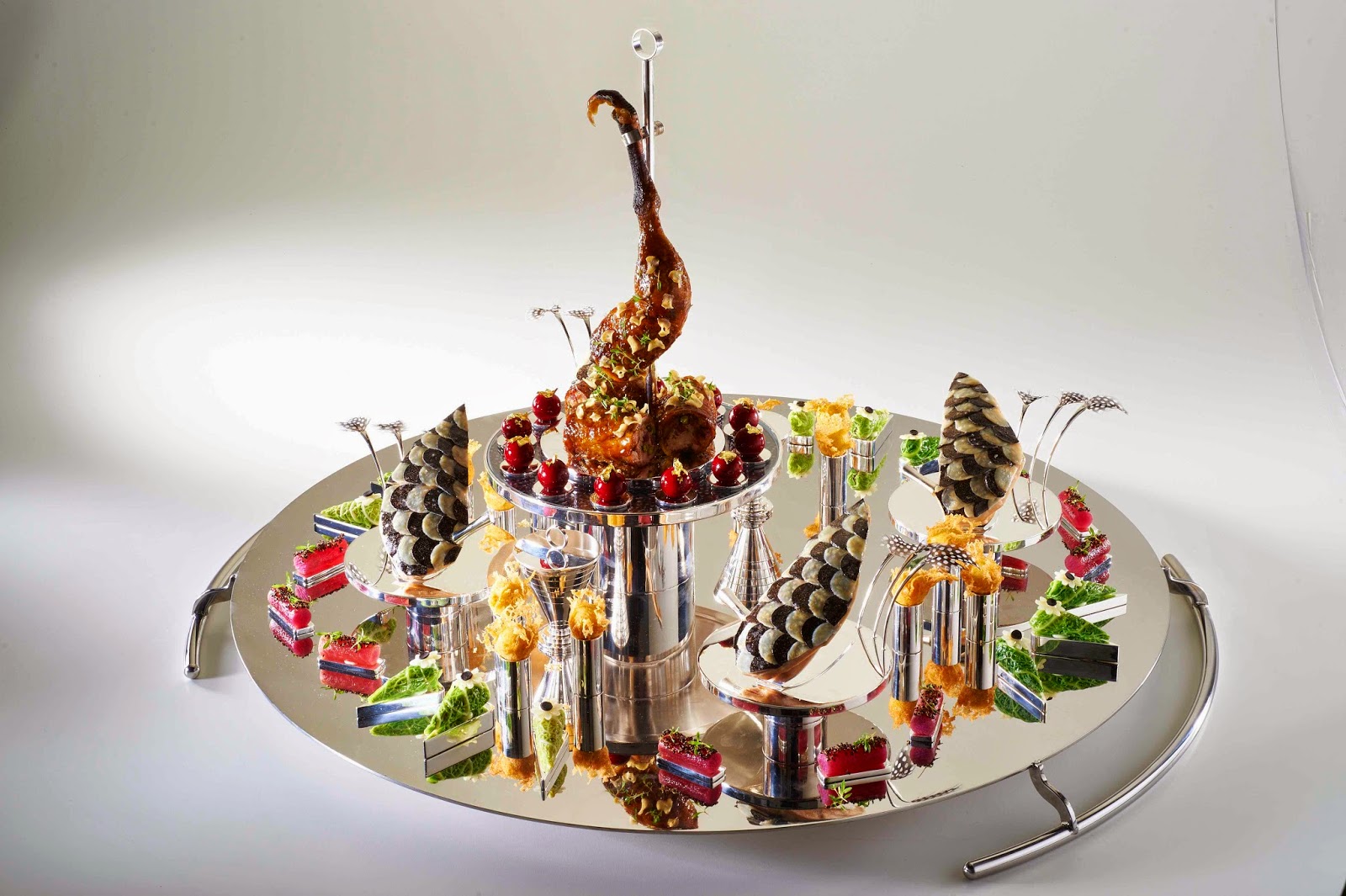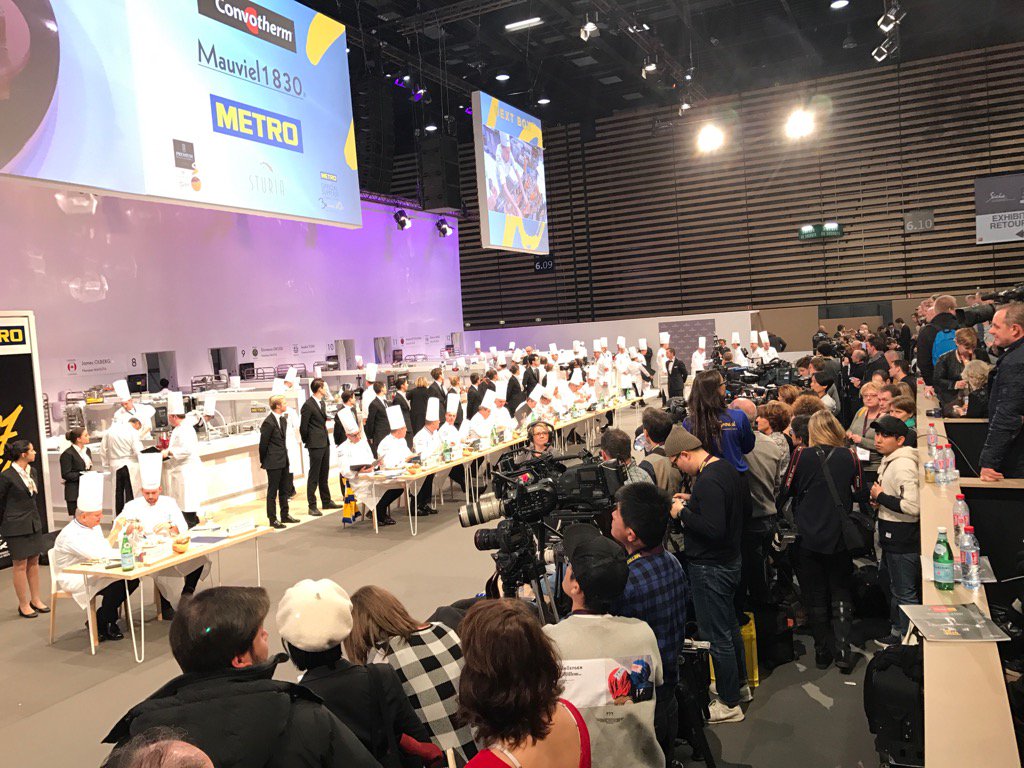The hottest love has the coldest end. – Socrates
We’re done, José.
It’s over.
It’s not you; it’s me.
Time to move on.
I need space. (So do my trousers.)
Breakups can be sad, but sometimes tears are the price we pay for the freedom we need. (And boy do I need my freedom from the tyranny of tasting menus.)
Breaking up can make you a better person. This might be good for both of us.
Before we go into why this is necessary, a little history is in order.
What we now call tasting menus, used to be called degustation menus. They were the province of a certain level of high-falutin’ French restaurants, and they usually came on a little insert to the menu offering to let the chef decide what special courses he would feed you that night.
Tasting menus were an adjunct to the main, a la carte selections, and were of interest to mainly the most dedicated gourmands. You knew you weren’t in for the usual starter-main-dessert meal, and that the courses would be smaller, and there might be a couple more of them. Mainly though, you went the degustation route because it promised to show the kitchen strutting its best stuff.
This is the way things were from the late 1970s (when yours truly became seriously involved with cooking/food/restaurants), until the late 1990s.
Then, Tom “Call Me Thomas” Keller and Ferran Adrià came along and ruined everything.
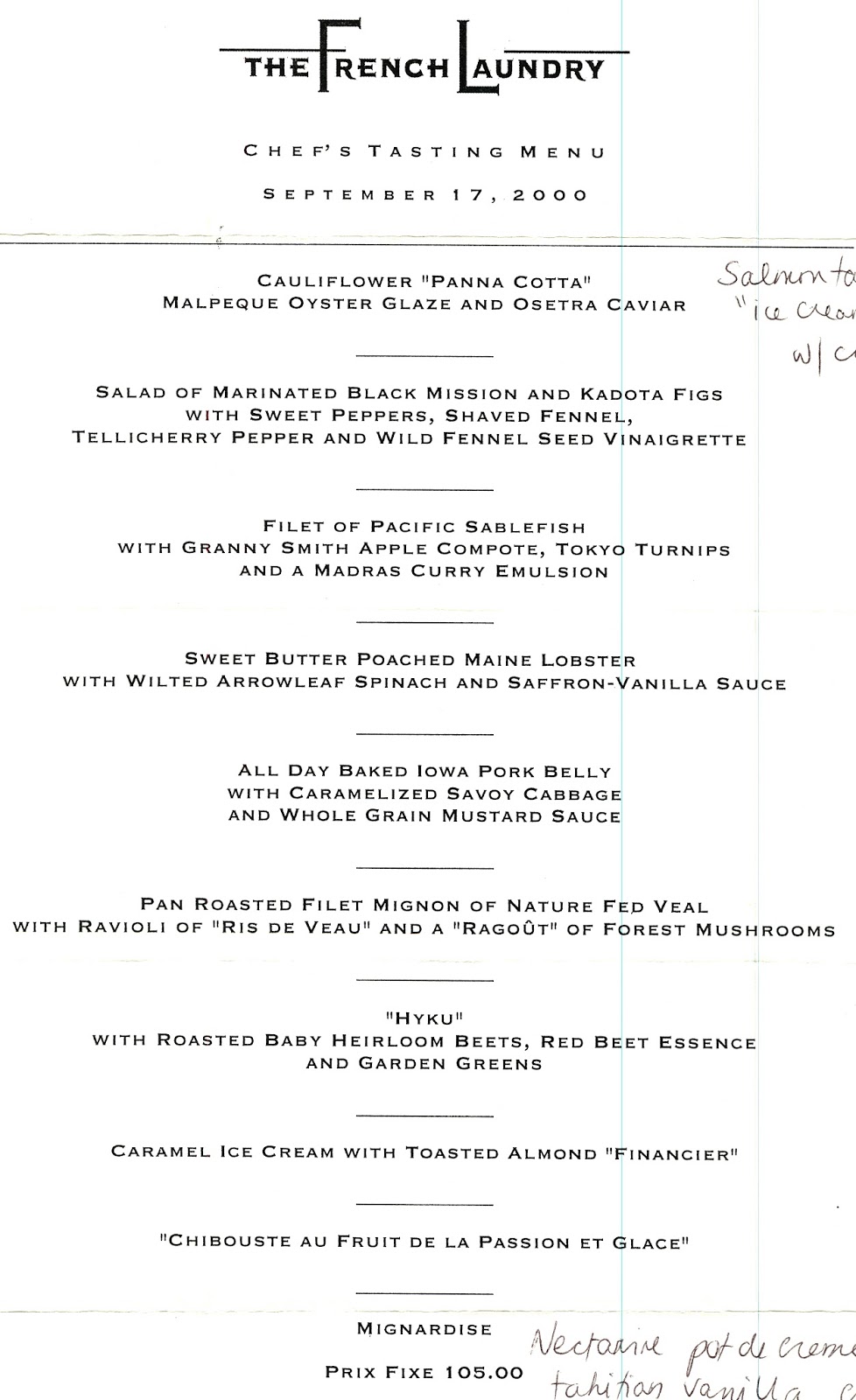 (This looks like 10 courses, but at the end of the evening, it was more like 15)
(This looks like 10 courses, but at the end of the evening, it was more like 15)
Gastronomy historians might have another take on this, but from my perch, the whole “you will be eating/swooning over 15 small plates of chef’s creations” really took off when Keller got soooo much press for his (mandatory, multi-course) feast at The French Laundry.
In 1997, I was in Napa Valley at a writer’s conference with Ruth Reichl, Colman Andrews, Corby Kummer, Barbara Kafka, and a host of others, and that’s all they could talk about. This talking eventually morphed into a gazillion raving/fawning articles about Keller in every major food ‘zine. Soon enough, the copycat race was on.
When Adrià made his big splash with El Bulli around the same time, the die was cast and high-end restaurants from Lima to London adopted the formula of wowing their customers with “techniques” over taste. A chef friend told me of going to El Bulli fifteen years ago and throwing in the towel….after the 44th course with more on the way.
No longer were a half-dozen specialties of the house enough, as you might find at Paul Bocuse or Le Cirque. Instead, Keller and Adria started an arms race of escalating courses…where mutually-assured palate destruction was the result if not the goal.
These days, almost every restaurant in the World’s 50 Best centers its cooking around a bill of particular, itty bitty ingredients done by the biteful.
It’s time to stop the madness.
Who really wants to eat like this? Answer: no one.
Watching chefs piece together teeny tiny pieces of food into dish after dish of edible mosaics no longer holds any fascination for anyone but jaded critics who constantly need to be dazzled while “discovering” the next big thing.
As Robert Brown elucidates in his excellent evisceration of the form, tasting menus have debased cuisine by turning it into an exercise in solipsism for chefs:
By tailoring his operation around it (essentially turning it into a glorified catering hall since most, if not all customers eat the same meal), a chef is able to run his restaurant with a smaller kitchen staff, determine with precision his food purchases, and enhance his revenue by manipulating, if not exploiting, his clients by exercising near-complete control over them.
Conceptually, the tasting menu is a losing proposition for the client even in the happenstance of an enjoyable dish. If and when you get such a dish, it is usually never enough, thus making you desirous of something you cannot have; i.e. more of the dish. When you have a dish that is less than stellar or just plain bad, the chef has foisted on you a dish you did not bargain for, thus debasing your meal in the process. The perfect or near-perfect meal is all but unattainable when your waiter brings you six or eight or twelve, sometimes even many more, tastes. Given the intrinsic hit-and-miss nature of tasting menus, I have never come close to having such a meal. As with great dramas, musicals, concertos, or operas, culinary perfection is almost always found in divisions of two, three or four.
I read this essay two years ago and agreed with it, but it took that much time (and several more marathon meals) for the lessons to sink in. (You might remember that I was also bored out of my gourd by Meadowood and Alinea a couple of years ago.)
If New York restaurants are any indication, the next big thing is a return to sanity: the classic catechism of appetizer-entree-dessert. The way you eat in good French restaurants and homey Italian trattoria; the way the human body was meant to digest food.
When I go to Spain in a couple of months, it’s going to be a challenge — since the Spaniards invented (or have at least expanded and exploited) this unnatural way of eating more than any other culture. One of my solutions will be to go at lunch (like I do in Paris and Italy), where the meals are shorter, more focused and more fun. Plus, you then have the rest of the afternoon/evening to walk off the calories.
As for my recent meal at é by José Andrés, below you will find the list of dishes, along with some tasty snaps.
For the record: almost every bite was a testament to intense flavors and culinary skill. It was my third meal at é in as many years, and the best of the bunch. Chef de Cuisine Eric Suniga and his crew orchestrate a perfectly-timed concert where everything harmonizes — with a staff busting their asses while never missing a beat or hurrying the customers.
It’s dinner and a tweezer show, a plating performance if you will (the actual cooking takes place out of sight), which almost makes you forget you’re paying $400/pp for a meal with strangers.
The only trouble is there’s both too much and too little going on. Too many dishes and not enough time to reflect and contemplate them, and not that enjoyable if you really want to savor the cooking, the techniques, or the food and wine matches (which are excellent).
Even with those criticisms, though, there probably aren’t five other restaurants in America that can match it.
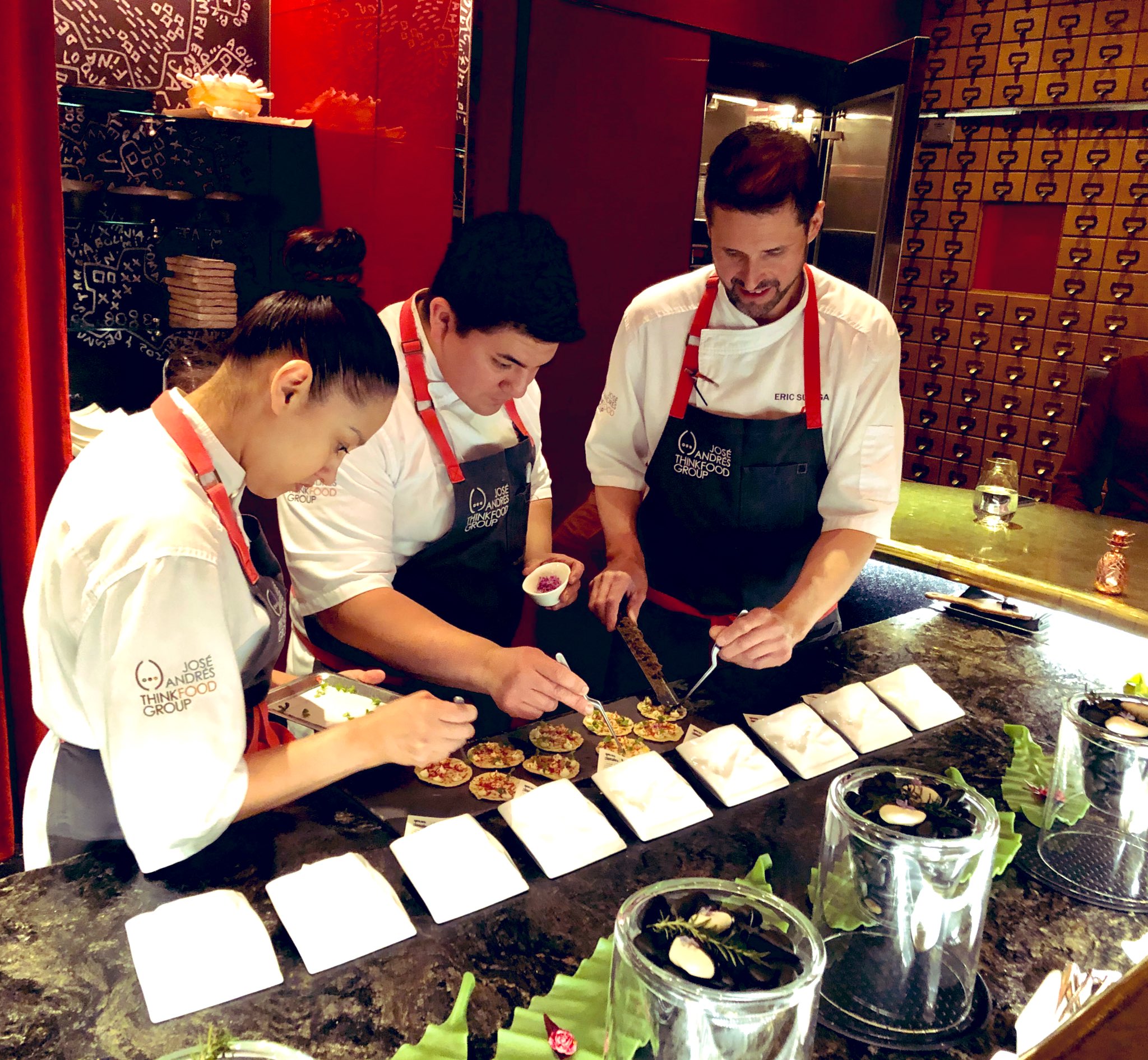
But for me, no màs. Never again.
I don’t want to eat 20 different things at a sitting. I realized some time ago that you quickly hit a point of diminishing returns with these slogs — your satisfaction being inversely proportional to the number of fireworks going off in front of you.
Three to six courses is all one’s brain and palate can absorb. Everything else is just cartwheels in the kitchen, the chef as baton twirler.
To be brutally honest about it, this type of meal isn’t about the food, or the wine, or the conversation. The point is to have you ohh and ahh over the production. There isn’t much time between courses to do anything else.
The great joy of going to a restaurant is deciding at the very last minute what you want to eat, not what the chef insists you eat. Tasting menus rob you of that singular pleasure, and for that reason alone, I must bid them adieu.
Here are the dishes:
Truffle Tree
Morning Dew
Beet Rose
It was small and and tasty but not that photogenic; let’s move on.
Stone
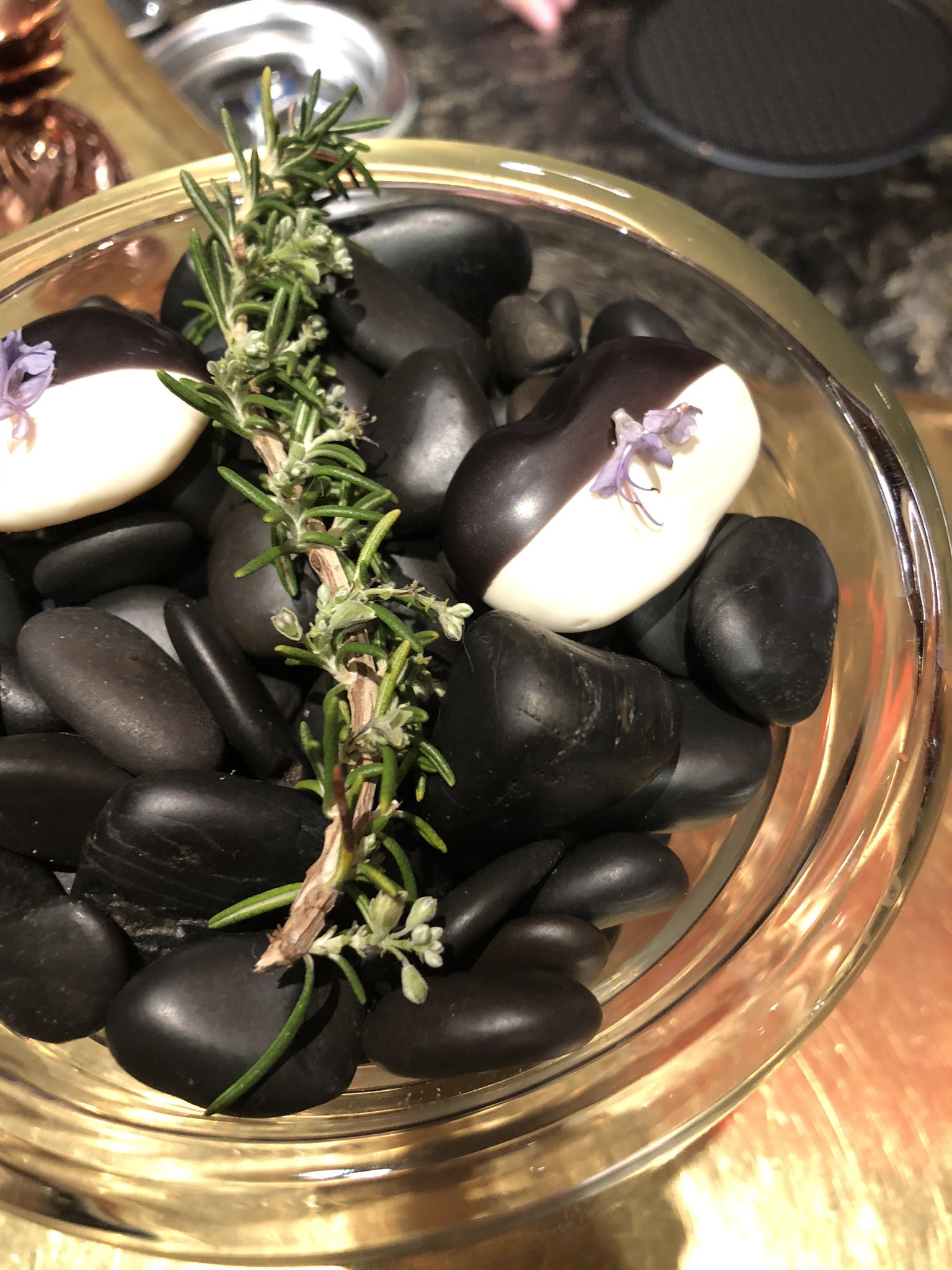
Spanish Pizza
—
Wonderbread
Pan Con Tomate
This was a small piece of the world’s greatest ham on an almost-not-there puff of bread. The only thing wrong was there should have been more of it.
Uni Y Lardo
Vermut
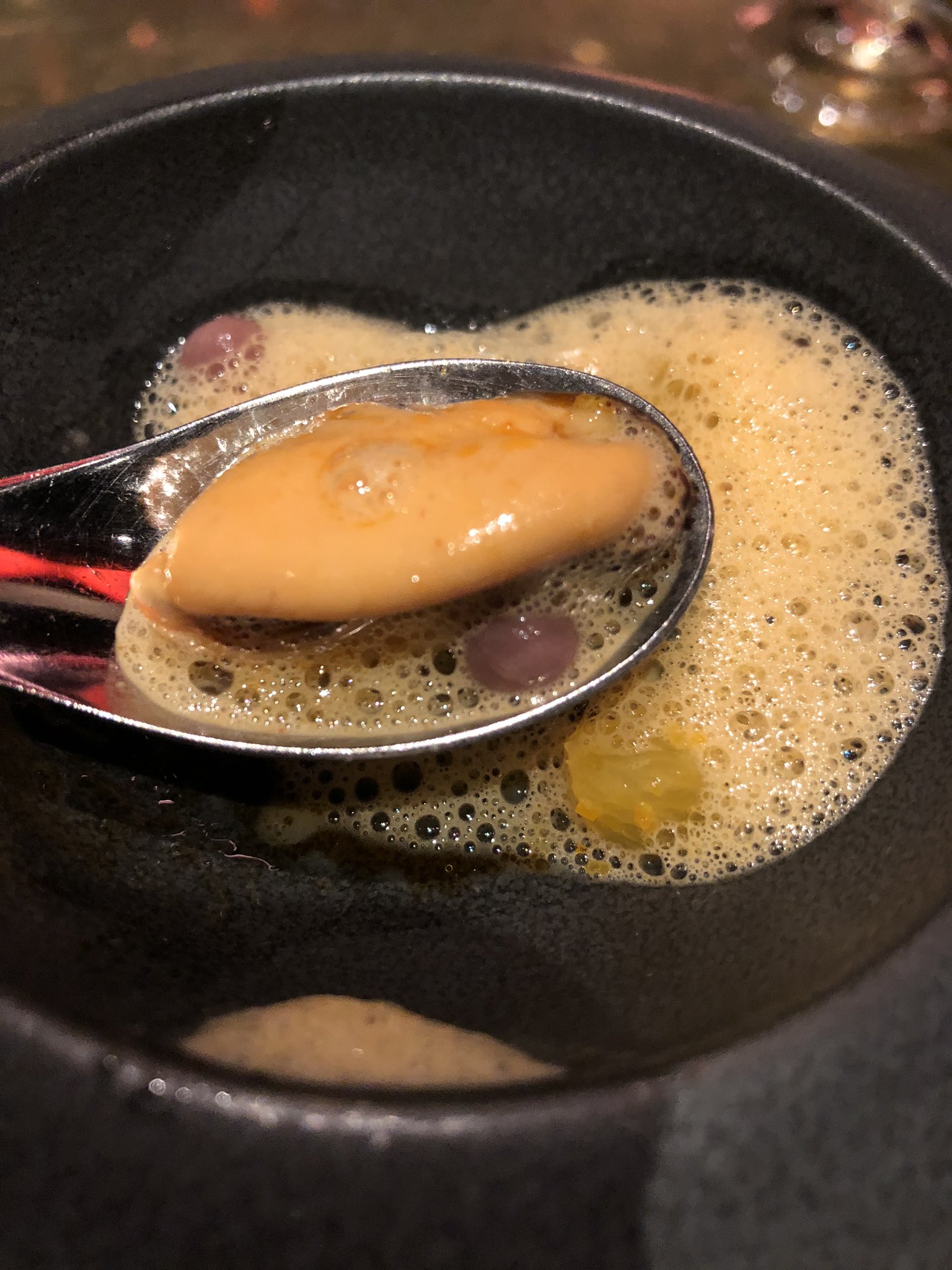
Edible Sangria
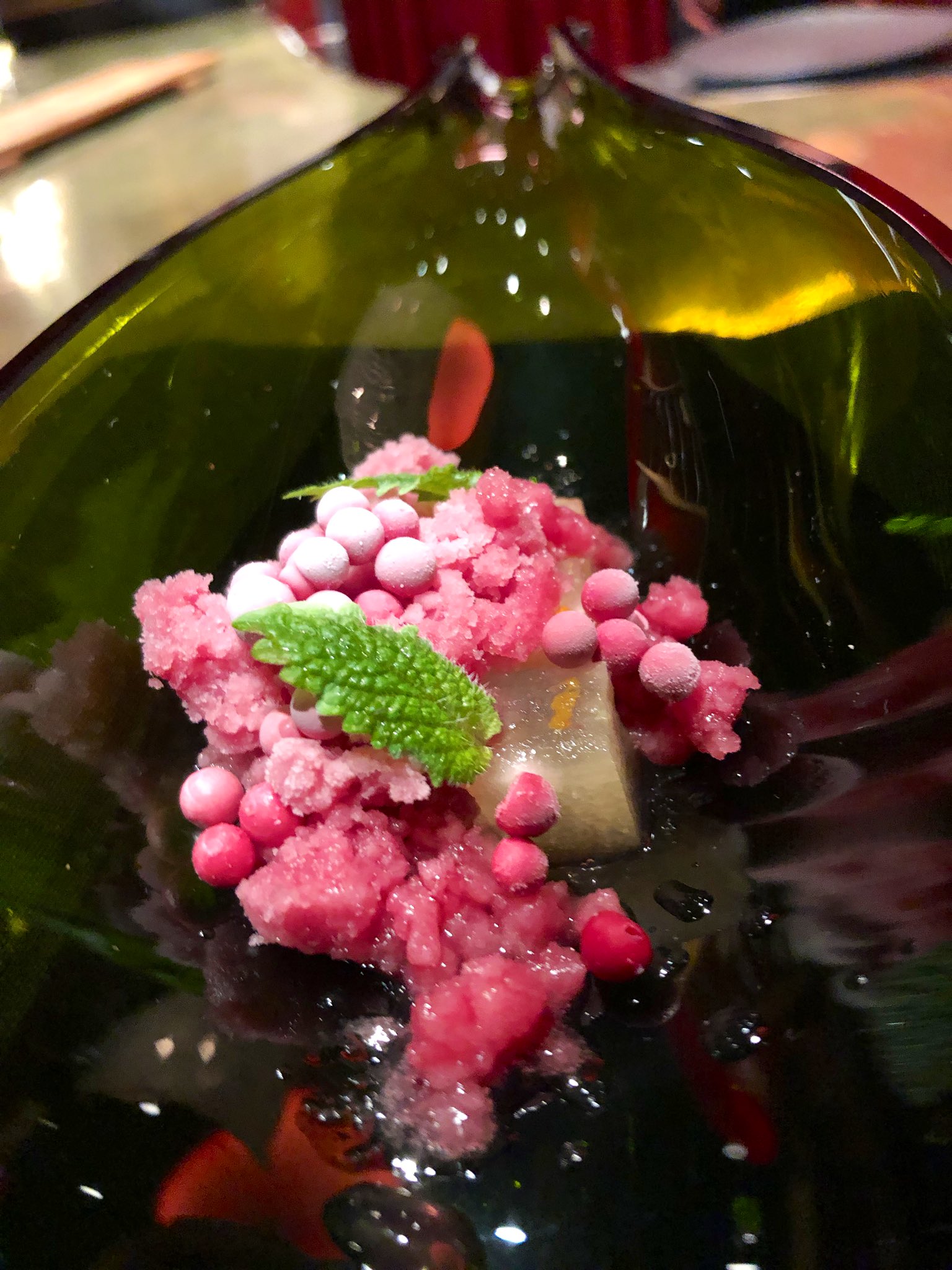
—
Esparragos en Escabeche
Txangurro a la Donastiarra
Crab served in its shell — deliciously crabby but unremarkable.
Foie Royal
Platija
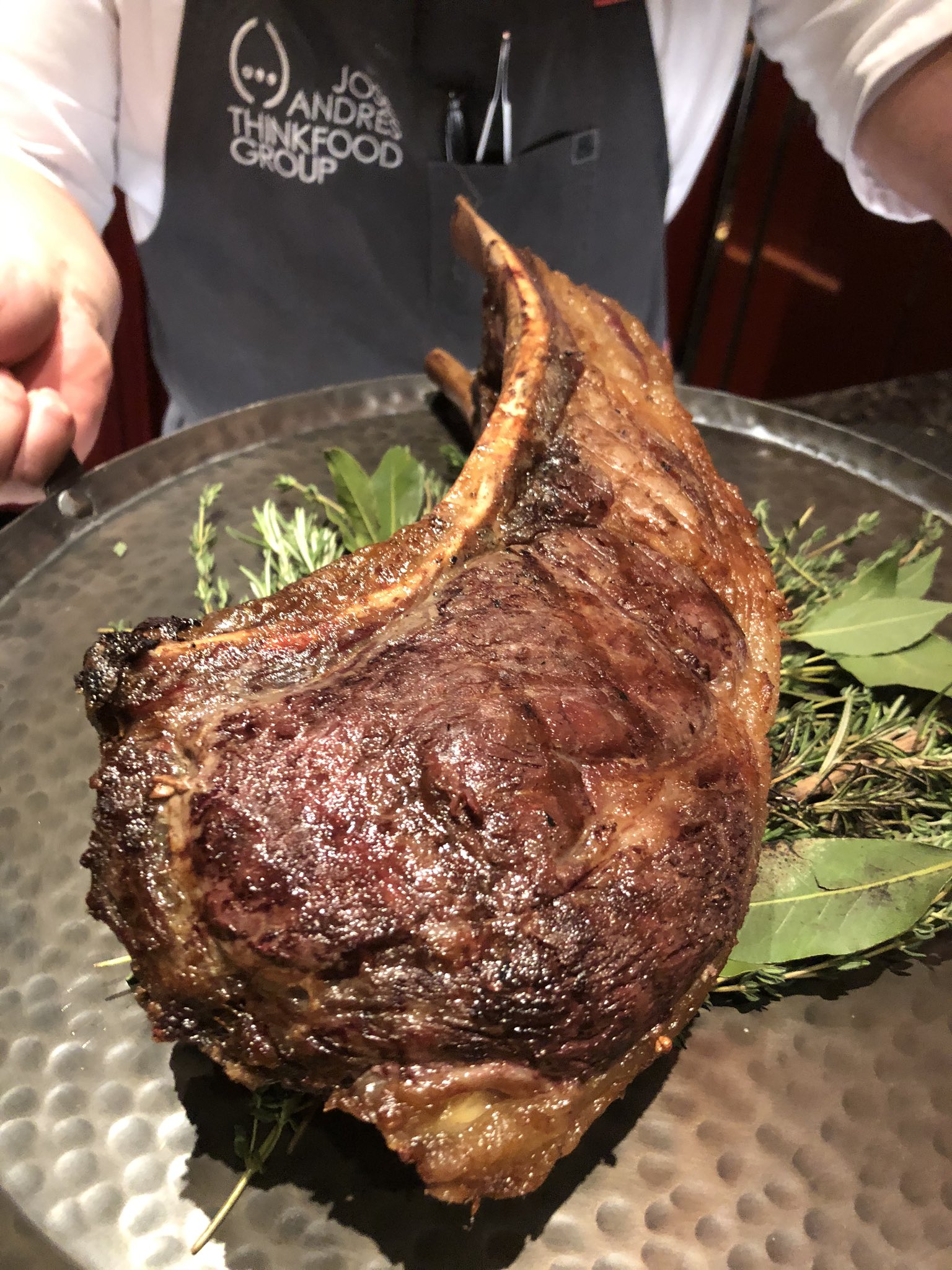
Chuleta
A block of fluke that was no fluke…even if it was a bit boring. FYI: fluke is always boring. Sorta surprised they used it.
—
Empanada
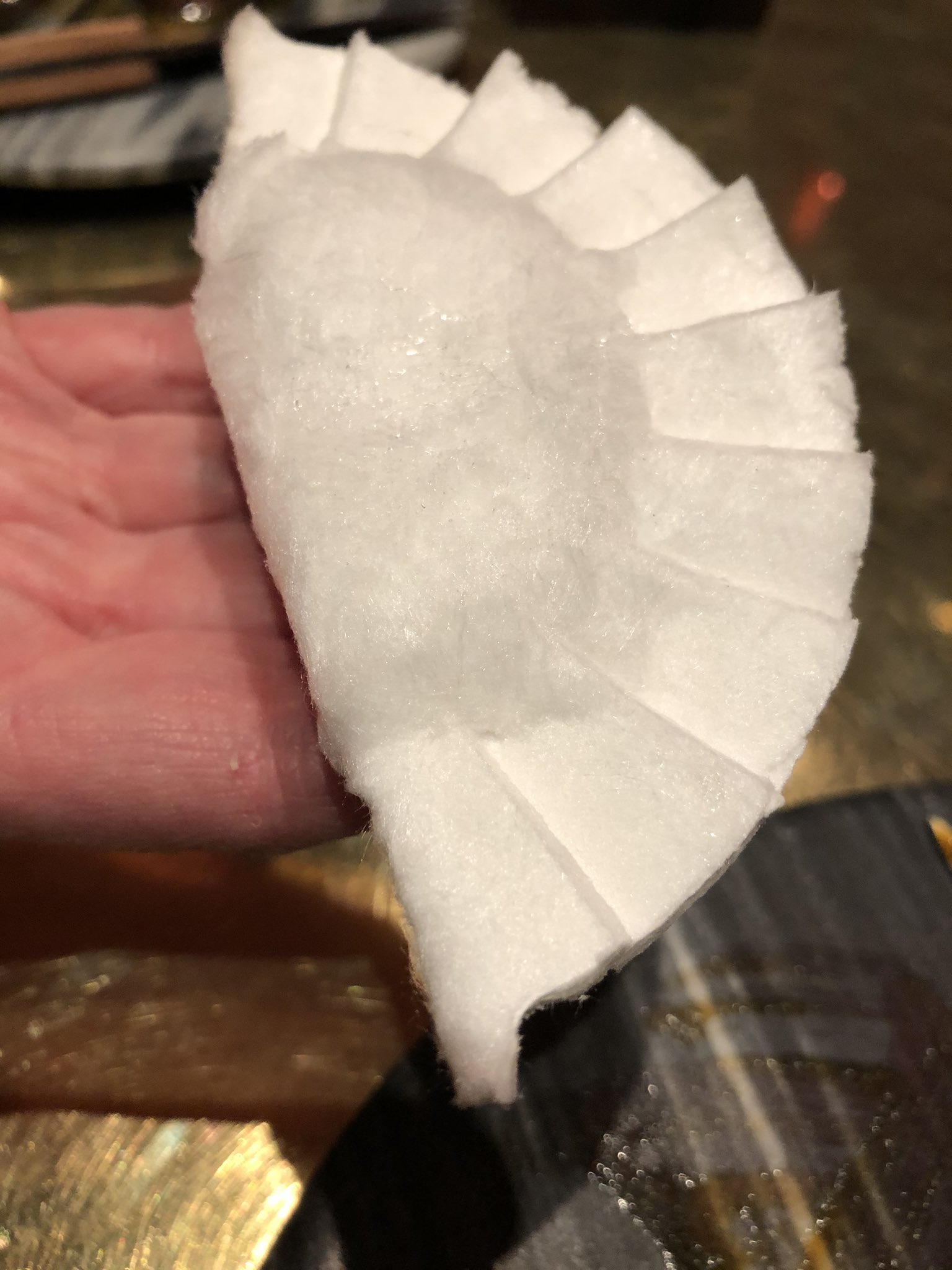
Menjar Blanc
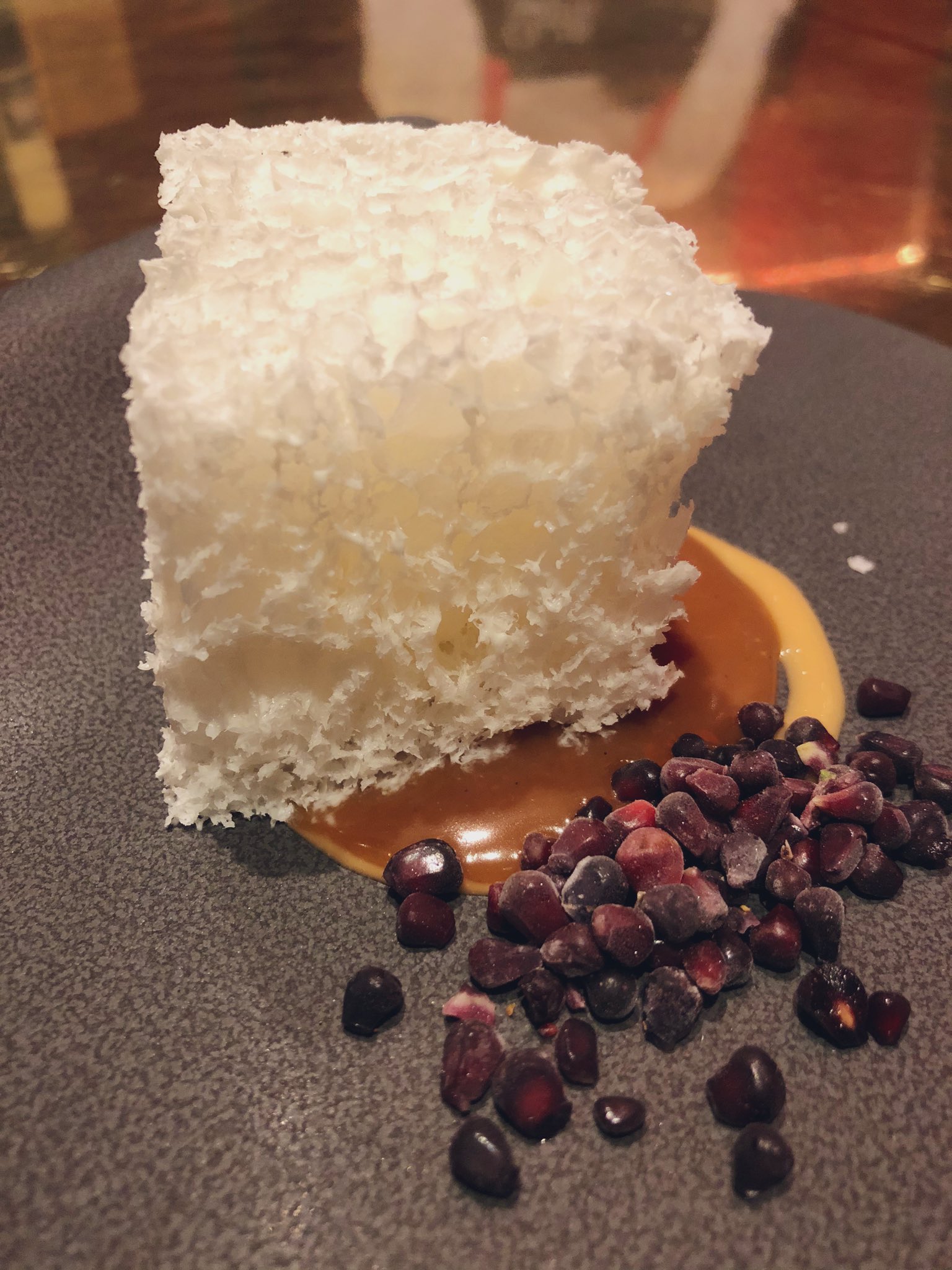
Winter in Vegas
Intxausaltsa
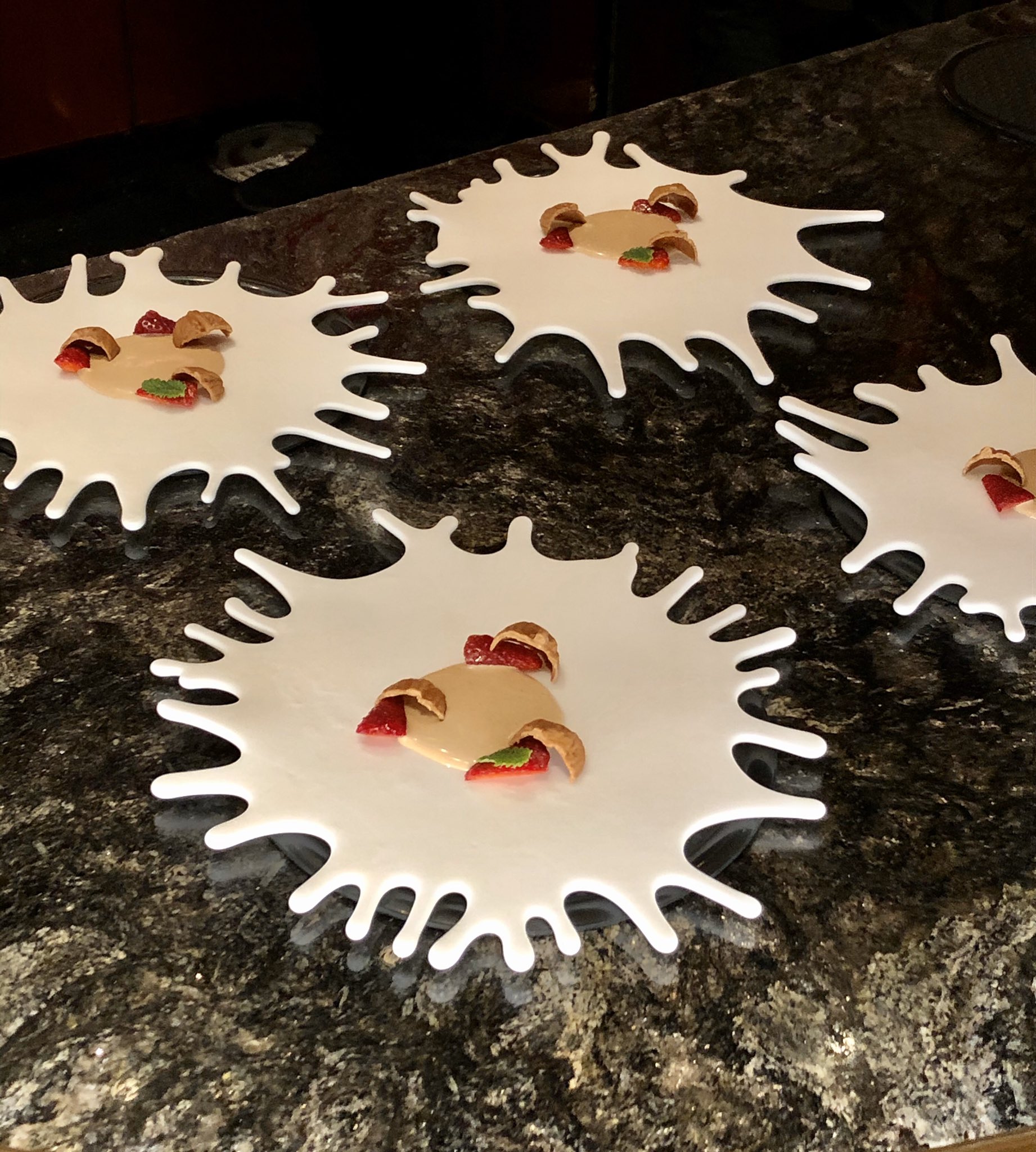
Cherry Bomb
More things…
By the time you get to “more things”, only the heartiest of soldiers is still ready for combat. Most have run up the white flag as they’re being politely herded off to make room for more cannon fodder.
That’s when it hit me and I mumbled, “I still love you, José; I’m just not in love with you anymore. Certainly not with this dining concept. Whatever flame you may have ignited in me 20 years ago with your wacky Spanish molecular manipulation is now but a smoldering ash — the charred remnant of a fiery passion that once had no bounds (or course or calorie counts), and is now as worn out as bacon-wrapped dates.”
You’re better off without me. You’ll be happier with someone who appreciates you more than I do.
And I’ll be happier dating your sexy siblings: the smoking-hot Jaleo or the bodacious Bazaar Meat.
You wouldn’t mind, would you?
I hope we can still be friends.
Our meal for 2 came to around $800, including tax, tip, and $120 worth of wines by the glass. Notably absent above is any consideration of price-to-value ratio. For aspiring gourmets, globe-trotting gastronauts, and culinary show-offs, it’s probably worth it. For a one-time splurge it’s absolutely worth it. There’s no more convivial way to experience the glories(?) of molecular gastronomy, accompanied by a great steak.
The Cosmopolitan Hotel and Casino
3708 Las Vegas Boulevard South
Las Vegas, NV 89109
702.698.7950
